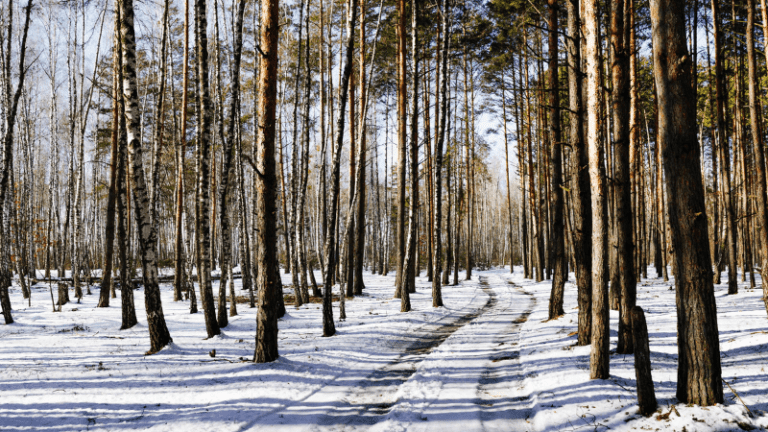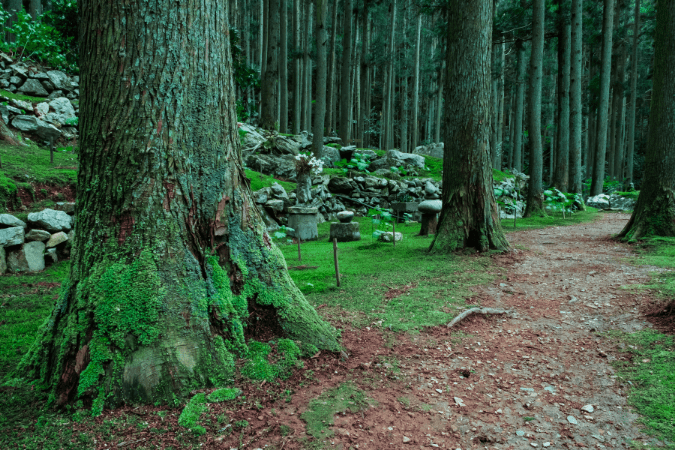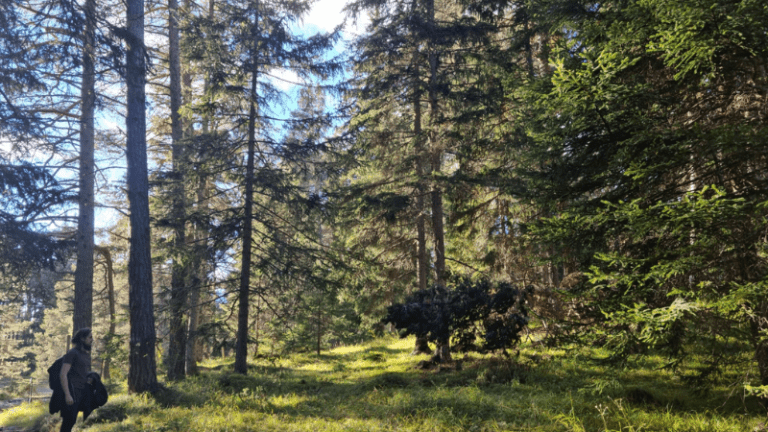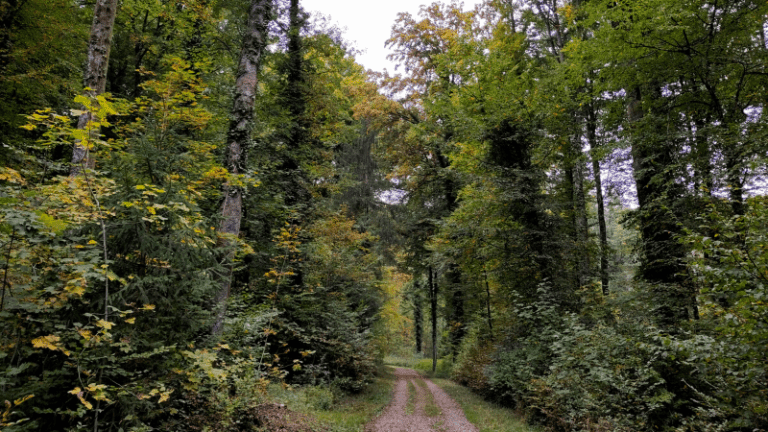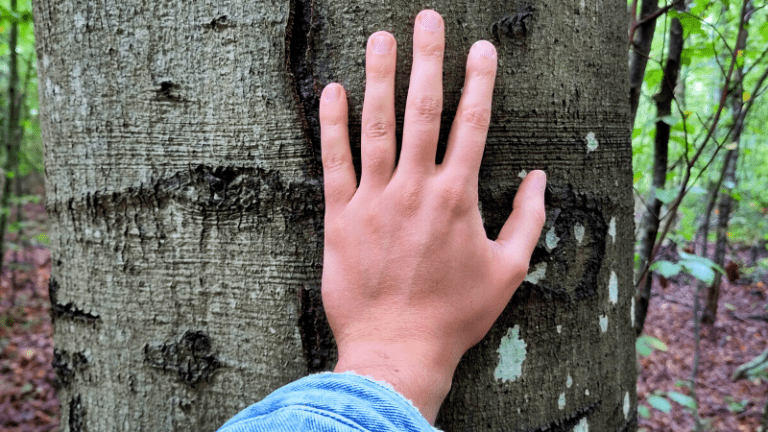Background knowledge for forest bathing: What a forest is, how long people have lived there, and why it's good for you
What is a forest? Since when do people live there? And why is it good for us to spend time in the forest? These are some of the questions we will answer in this article. We'll also delve into the research of Dr. Qing Li, who has found that spending time in the forest can be extremely beneficial to our health. Read on to learn more!
I've gathered a lot of information for you based on books about trees, forests, forest bathing, documentaries, podcasts, and my own experiences. Ready?
Let's go!
What exactly is a forest?
A forest is a land with trees and usually undergrowth and ground cover. Forests are habitats for many animals, birds, insects and fungi. Some of the animals that live in forests are: Deer, squirrels, rabbits, bears, wolves and snakes.
The definition of a forest can vary depending on who you ask. For example, the Food and Agriculture Organization of the United Nations (FAO) defines a forest as "land with a tree cover of more than 30 percent and an area greater than 0.25 hectares." Other organizations, however, such as the World Wildlife Fund (WWF), define a forest as "an area with a tree cover of more than 60 percent"
There are three main types of forests:
- tropical
- moderate
- boreal
Tropical forests are located near the equator and have the greatest biodiversity of all forest types. Temperate forests are found in the mid-latitudes and they have warm summers and cold winters. Boreal forests are found in the high latitudes and they consist mainly of conifers such as pines, spruces and firs.
Forests generally consist of three layers: the canopy, the understory, and the forest floor. The canopy consists of the tallest trees in the forest, which can be up to 30 meters high! The understory consists of smaller trees and shrubs and receives much less sunlight than the canopy. On the forest floor, you'll find most of the forest's animals, as well as mosses, lichens, and fungi.
Why forests are important for people
Forests are important for many reasons. They provide us with fuelwood and lumber (which, unfortunately, is usually taken in unsustainable ways), they help regulate the earth's climate, and they are home to many plants and animals. In recent years, it has also been recognized that forests can improve our mental and physical health.
Humans have lived in forests ever since they existed. The first human societies were hunter-gatherers who used the forest for food, shelter and clothing.
Over time, some societies began to practice slash-and-burn agriculture. Current scientific knowledge dates the beginnings back to 8,000 years ago. This is a form of agriculture in which a piece of forest is cleared and then burned. This type of agriculture is still practiced today in some parts of the world.
Comparing the 8000 years of slash-and-burn with the 200,000 years that humans have existed, that accounts for only 2.5% of humanity's existence.
Today, forests cover only about 30 percent of the earth's land area. However, this number is decreasing due to deforestation, the clear-cutting of trees. There are many reasons for deforestation, such as the conversion of forest land into agricultural land, the cutting down of trees for fuel or construction purposes, and the building of roads and other infrastructure.
Despite the decline in forest area, spending time in the forest is still good for our health. In fact, there is a growing body of research suggesting that bathing in the forest, also called shinrin-yoku, can have a number of health benefits.
Why a stay in the forest is good for you
Dr. Qing Li is a leading researcher in the field of forest medicine. In his book, Forest Bathing: How Trees Can Help You Find Health and Happiness, he describes the many ways that spending time in the forest can improve our health. Some of the benefits of forest bathing include:
- Stress reduction
- Mood improvement
- Increase the energy level
- Improve heart health
- Strengthening the immune system
- Improving the quality of sleep
Interestingly, the effect of forest therapy sessions seems to be the same as that of medication.
Even though every forest has a positive effect on health, the effect varies greatly depending on the condition of the forest. Industrial forests, which consist of monocultures (one type of tree) of fast-growing trees, are not as beneficial to health as natural mixed forests. This is because natural forests contain a greater diversity of trees and plants that produce more phytoncides (organic compounds released by plants). Phytoncides have been shown to have a number of health benefits (as we described earlier in this article).
So if you want to get the benefits of forest bathing, you should find a natural forest. But any time you spend in a forest is useful!
In addition, different trees have different properties. The following five trees have proven to be particularly beneficial to health:
– Pine: Reduces stress and fatigue and strengthens the immune system.
– Cypress: Improves respiratory diseases such as asthma and bronchitis.
– Birch: It detoxifies the body and helps reduce inflammation.
– Oak: Strengthens the immune system and helps improve digestion.
– Maple: Reduces stress and anxiety and helps improve sleep quality.
If you plan to spend time in the woods, there are a few things you should keep in mind. First, dress appropriately for the weather. Second, be considerate of the plants and animals that live in the forest. And finally, you should follow the rules and regulations that apply.
By the way, we also have tips for you, How to get the most out of forest bathing.
Forest restrictions
Depending on which country you are in, there may be restrictions. In Japan, for example, there are certain forest areas that are off limits to visitors. This is because these areas are considered sacred places.
In the United States, there are also some restrictions. For example, you may not camp or build a fire in certain areas of the forest. Be sure to check with local authorities before visiting a forest area.
This also applies to Germany, where you should take a quick look at local rules and restrictions by researching on the internet or contacting the nearest city council.
As you can see, there's a lot of background information to consider before you go forest bathing. But don't let that discourage you! Most authorities are pretty relaxed about you accidentally entering areas that you shouldn't. As long as you behave respectfully, there's usually no problem, which brings us to the next point:
Rules of etiquette in the forest
If you're planning to go into the woods - especially if it's your first time swimming in the forest - there are certain rules you need to follow. Some are for the preservation of the forest, others are for your own safety:
- No litter: This is pretty obvious, because pollution harms the forest and also poses a danger to the animals that live there - and to you and other people.
- Don't make too much noise: By this we mean don't play loud music or other artificial sounds. Normal talking and even occasional shouting are fine. According to the famous forest scientist Peter Wohlleben, this does not disturb the animals, but rather other people:
"...We were talking loudly. Two deer stopped about 80 yards from us, we continued to talk loudly, and the deer did not flee. You know: Anything that is quiet is dangerous. What is loud is not dangerous. Families with children in the woods are welcome to talk loudly, welcome to draw attention to themselves." (From a Interview with Peter Wohlleben)
- Don't disturb the animals: It's okay to make noise, but disturbing wild animals is not okay. Don't try to approach them and make sure your dog doesn't either.
- Don't pick mushrooms: This only applies in private areas and if you are not 100%ig sure what kind of mushroom you found. If you pick the wrong mushroom, you could put yourself in serious danger. If you are sure and it is a public forest, please don't pick all the mushrooms so they can grow back faster.
- Do not make fires: this is not only dangerous, but also leaves ugly scars on nature. If you want to barbecue, use special fireplaces set in stone and do not leave trash.
- Do not eat unprocessed foods from near the ground: these may include berries, acorns and other nuts. Some of these can be toxic to humans.
- Do not drink from ponds: This water may not be clean and could make you sick. If you want to drink it, you must filter (and ideally heat) it first.
- Do not pick flowers or remove plants: This can damage the natural ecosystem of the forest.
- Stay on the paths: Straying from the trails can harm plant life and can also be dangerous.
Of course, these are just a few of the many rules that exist. Be sure to familiarize yourself with local rules and regulations before visiting a forest area.
Now that you know a little more about forests, you're ready to start your own forest bathing journey!
What are the benefits of spending time in the woods? Let us know in the comments below!
P.S. If you want to learn more about forest bathing, check out our previous blog post:
Shinrin Yoku: What is forest bathing and the benefits of trees?



